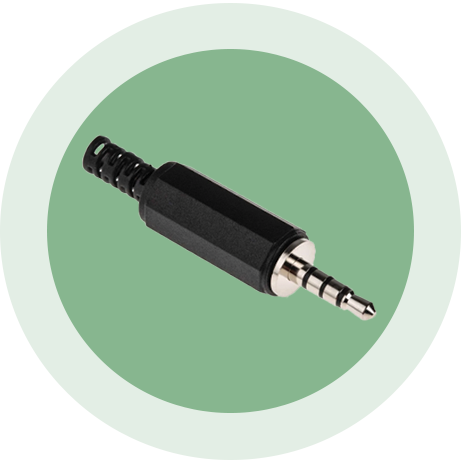
This does not interrupt audio played by pulseaudio, it just records it as if it were also an input device. If you select this "Monitor" as your audio input device, that application will no longer record audio from microphones, but will capture any audio sent to your sound card. One of those options will read, "Monitor of ". You can click this button and change it to any audio device you wish such as a different microphone. You'll notice that there's a button next to each application that displays the device it is listening on for audio input. You can set it lower if you want, but the volume at which audio is played by your system is the volume at which it will be recorded.
Audio loopback software#
Make sure your software volume output (the volume level in pavucontrol, not the volume knob on your external speakers) is set to 100%, but not more than that in order to avoid distortion. In the capture settings for your application, enter the audio capture device as "pulse".Īfter you've verified that your recording software is indeed listening for input using pulseaudio and it appears in the recording tab of pavucontrol, we can now change where it listens for input. If your application is actively recording, but does not appear in the recording tab of pavucontrol, then it is not using pulseaudio for this purpose. Remember the application has to be actively recording audio input, so if you're using something like gtk-recordmydesktop, it must be actively capturing your screen to appear here. In the "Recording" tab, you will see a list of all applications currently listening for audio input. The tab we're interested in is the "Recording" tab. You'll notice at the top of the window several tabs. Once pavucontrol is installed you can use it to change a variety of options regarding your sound, more-so than the default sound manager in most desktop environments.
Audio loopback install#
One method you can use to accomplish this is to ?install and use the software package pavucontrol, which is available in the Debian repositories, by executing: # apt-get install pavucontrol

This could be useful for screen recording sessions where you want to capture the audio as it is produced instead of just setting an external microphone next to your speaker.

This will help improve the volume and quality at which the audio is recorded.Pulseaudio provides us with the means to easily create an audio loopback device that allows us to record sounds produced by our system as if they were being redirected into the microphone. I suggest keeping your system volume turned all the way up, and using the knobs on your speakers to adjust playback volume. You can now stop recording, and even though the recording application is no longer recording, pavucontrol will remember to make that program record on the sound monitor until you change it back to something else using the same method described above. In my case it reads "Monitor of Built in Audio Analog Stereo". Click this button and change it to "Monitor of foo" where "foo" is the name of your sound card that is playing the audio you wish to record. You'll now see in the top right of the recording settings for your application a button that lists the device it is currently recording from. If you're certain your application is recording properly, but isn't displayed here, try changing the dropdown box in the bottom right of PulseAudio Volume Control from "Applications" to "All Streams". Now switch over to PulseAudio volume control, and on the 2nd tab labeled "Recording", you should see your application recording, and if it's picking anything up you may see a bar jumping. By default it will probably start capturing from your microphone, which is why this just a test run. Open the software you wish to record the audio with, and start recording. We now have to do a test-run before we can begin using it. It should be listed in your applications menu as " PulseAudio Volume Control". Once you have it installed, you can now use it to re-direct your audio. You can also click on this apt link to do so: apt://pavucontrol Open Synaptic, or the Ubuntu Software Center, and search for and install the Pulse Audio Volume Control program called "pavucontrol". With the new structure, only audio from the specified process, and its children, will be captured.
Audio loopback how to#
If you are using an older version of Ubuntu (7.10 and earlier), then you can see how to set up pulseaudio at this wiki page: Windows 10 has always supported capturing all audio that is played on an audio endpoint (referred to as 'system' loopback capture), which captures all audio from all apps that are playing sounds on the chosen audio endpoint. In newer versions of Ubuntu, this is already taken care of by default. The first pre-requisite is that you have Pulseaudio installed.

You can use this to record sound directly from your system without capturing any background noise that your microphone would pick up, and without losing nearly as much audio quality. It is possible in Ubuntu, and other Linux distributions that use pulseaudio, to redirect sound that is played to a virtual input device.


 0 kommentar(er)
0 kommentar(er)
